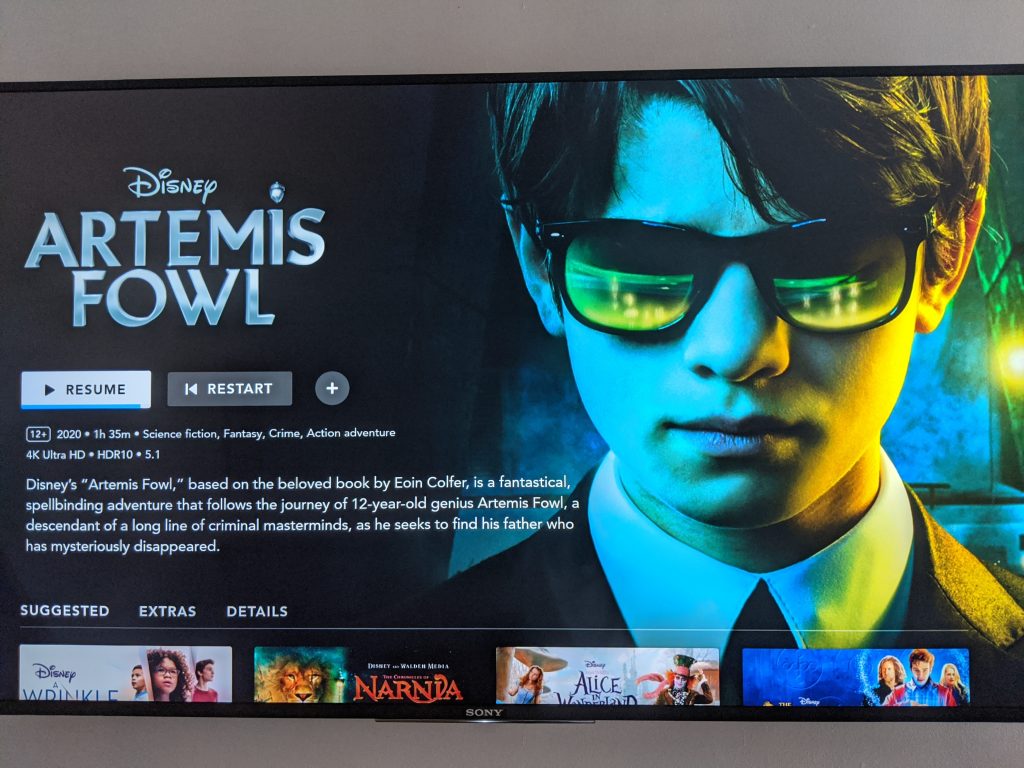With the recent film release of Artemis Fowl onto Disney+, I was inspired to revisit the YA book series by Eion Colfer. Whilst I had read Artemis Fowl back in the early 2000s the plotline had become a distant blur in my head. I remembered the basics of the story; Artemis is a rich criminal mastermind with an assortment of gadgets at his disposal. However, the different characters in the book series had long since faded away. Mainly because the books had never really resonated with me. It’s ironic given the fact the book involved magic and technology, something I would later explore in my own story, (WIFI).
I decided to re-read the first book before watching the movie just to compare the adaption. I quickly decided not to explore the entire book series, partially in order to see the movie adaption, and also because of the story. Memories came flooding back of a younger me struggling with the narrative of the book. Whilst the world is rich and engaging chapters feel lengthy and confusing. Especially, given the vast amount of jumping Eion Colfer does between characters. As a child, it took me a lifetime to finish one book and now I know why. In many cases, the chapters could’ve easily been split into several shorter chapters. Nevertheless, Eion Colfer certainly has an incredible knack for creating impressive arrays of technology and witty acronyms, for example, The LEPrecon, Lower Elements Police Reconnaissance force. Having created my share of acronyms for my own fantasy story I appreciate his imaginative ingenuity.
The first book tells the story of Artemis Fowl II trying to regain his family wealth via criminal theft. He does this by holding a fairy ransom for elusive fairy gold. The plotline is pretty simple and doesn’t stray with many subplots, despite the vast array of characters. I found the narrative about the fairy world below the earth was the superior storyline. The idea of fairies being officers maintaining the order of things for the Mud people (i.e humans) seems rather logical.
Due to the abundant amount of characters, mainly male, the book failed to capture my interest on a personal level. Furthermore, I wasn’t emotionally attached to the main characters; Artemis Fowl or Holly Short. This is mainly because neither of them seemed to get any character development that strayed past the main plotline. At face value, the story offers a James Bond-style story for children. Thankfully, I still enjoyed the book for the quirky use of technology. I particularly enjoyed the logistics of translating the fairy book – The Book of the People into the English language by running it through a computer programme.
Expectedly, the film takes a different approach to the book emitting certain characters. For example, the film sets out to give the audience a brief backstory to Artemis Fowl II, his keen intelligence and his strong relationship with his father. In specific, his father’s rather forced obsession with fairies and folklore. Suddenly, Artemis’s father is kidnapped by a mysterious creature, and he uncovers the secret world of his dad’s criminal mastermind life. Artemis then uses his knowledge of the fairy world to seek out and hold a fairy at ransom, all in the hopes to rescue his father.
By comparison, the book begins with Artemis Fowl more or less living independently, and his father’s presumed dead from a criminal mission. In true Disney fashion, the film attempts to give Artemis a more humanised narrative. He isn’t really a criminal mastermind like his book counterpart. Instead, he is simply a genius trying to rescue his father. Furthermore, Artemis uncovers the world of fairies via his own determination and intelligence in the book, whilst in the film, his dad had done all the research and things seem to fall into his lap.
Unfortunately, I was not a massive fan of the film adaption which is a real shame because I love when Disney invests in new ideas instead of remakes. The movie is by no means terrible, the CGI allows you to enter the world of the fairies and there is an impressive cast. I think the main issue with the film is that they have attempted to merge different books into one film. Once again, there isn’t enough time to engage in the characters. Much of the charm of the Artemis Fowl book was regarding the technologies used by the fairy folk. In addition to all this, the film loses the sense of intrigue due to the fact Artemis is no longer a heartless antihero.
However, I did appreciate the fact the film gave more diversity to the characters. The book’s narrative was overtly masculine with a white narrative. It was nice to see that Commander Root was now a female officer, played by Judi Dench, or that Foaly the centaur was played by a British-Indian actor Nickesh Patel. Admittedly, I didn’t find Judi Dench’s rendition of Commander Root particularly good, but the effort to be more inclusive in our modern world was just the touch of magic Artemis Fowl needed.



Be First to Comment